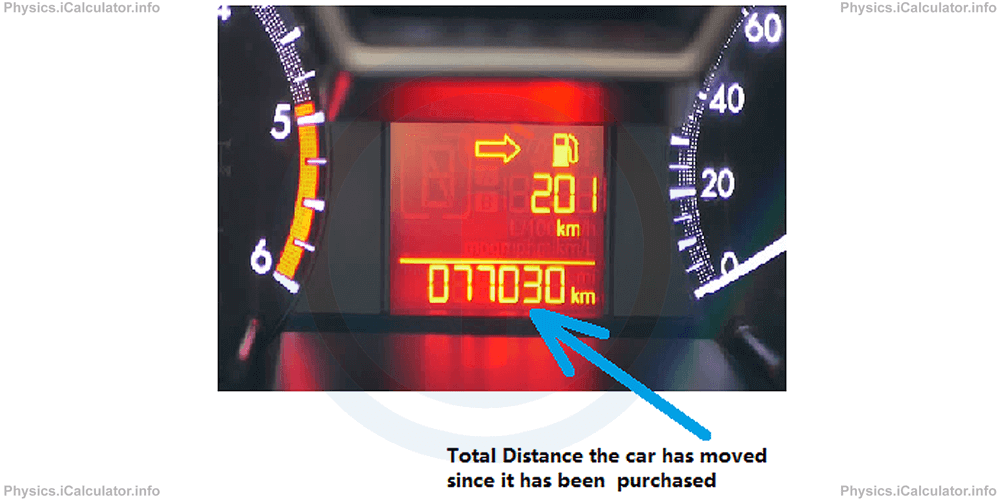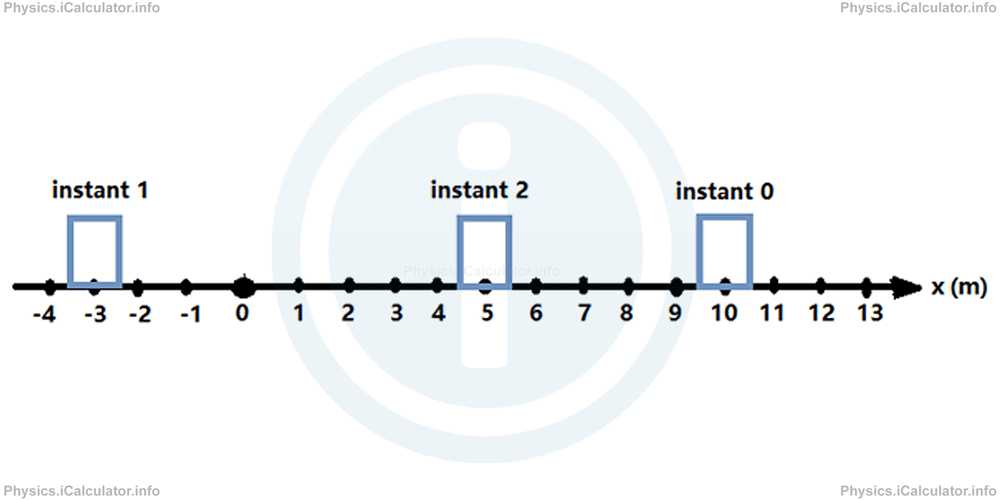Menu
Physics Lesson 3.3.2 - What is Distance? How does it differ from the Displacement?
Please provide a rating, it takes seconds and helps us to keep this resource free for all to use
Welcome to our Physics lesson on What is Distance? How does it differ from the Displacement?, this is the second lesson of our suite of physics lessons covering the topic of Displacement and Distance in 1 Dimension, you can find links to the other lessons within this tutorial and access additional physics learning resources below this lesson.
What is Distance? How does it differ from the Displacement?
In the previous example, it was supposed that we had lost the object from sight from a while and when we noticed it again, the object was displaced by +5m due right from its original position. But what if the object after starting its motion from x⃗1 = 7m had first moved for some metres (for example 6m) due left and then it has moved due right until it went to the final position x⃗2 = 12m?
It is obvious in such a scenario the object has moved more than 5m, which was the result obtained when we calculated the Displacement. Therefore, we must consider another quantity (measured in metres as well) which shows the entire length of the object's path during its motion. This quantity is known as Distance (in formula, s).
Hence, by definition "Distance (s) is the length of the entire path followed by an object during its motion." Distance is a scalar quantity, as it does not involve any direction. When dealing with distance, we are interested only in the magnitude of movement (in units of length), not in the moving direction. In this regard, we can say that the distance 25m due North is the same as 25m due East as in both cases the object has moved for 25m regardless the direction.
In the previous example, if the object has moved first by 6m due left, it went at the position 7m - 6m = 1m. Then, it moved for other 11m due right as 12m - 1m = 11m (the final position is 12m). So, the object has moved 6m + 11m = 17m in total. Therefore, we obtain two different results for the same event:
and
But, what if the object moves only in one direction? Is the Displacement in this case equal to the Distance?
The answer is NO. Although the numerical result (magnitude) is the same in both cases, Displacement has an additional info included - the direction. Thus, if an object has moved 5m due right only, we say, "Distance is 5m" and "Displacement is 5m due right." Therefore, Displacement and Distance are never identical. You must be careful to avoid confusing them with each other.
Remark! Unlike Displacement, the Distance cannot be negative as it represents the length of the object's path. If the object is at rest, this length is zero but if it starts moving, the path's length becomes a positive number. Consider the mileage screen in a car. It show how many km or miles has the car moved since it has been purchased. This number is always positive as it counts the total distance the car has travelled regardless the moving direction.

In the figure above, we can learn that the car has travelled 77,030 km in total during its lifetime but we cannot know in which direction it has moved. Every km the car moves is recorded on the screen as a positive number, regardless the moving direction.
Example 1
Find the Displacement and Distance travelled by the object shown in the figure. 
Solution 1
The object's position at the "instant 0" represents the initial position, x⃗initial = +10m while the position shown at the "instant 2" represents the final position, x⃗final = +5m. The position shown at the "instant 1" is not considered when dealing with Displacement, as it is a transitory position. When calculating the Displacement, we are interested only at the initial and final position, not at the in-between positions during the transitory stages.
Hence, for the Displacement ∆x⃗ we have:
= (+5)m - (+10)m
= (-5)m
This means the final position of the object is 5m on the left of its initial position. You can check the veracity of this statement by looking at the figure, in which it is evident that the final position of the object is 5m on the left of the initial one.
As for the Distance, we must simply count the metres travelled by the object during its motion, regardless the direction. Hence, if we denote as s1 and s2 the two distances travelled by the object, we have
(the positions +10m and-3m are 13 m away from each other)
and
(the positions -3m and+5m are 8 m away from each other)
Therefore, we obtain for the total Distance:
= 13m + 8m
= 21m
To summarize, we say "the object was displaced by 5m due left but it has moved by 21m in total."
You have reach the end of Physics lesson 3.3.2 What is Distance? How does it differ from the Displacement?. There are 2 lessons in this physics tutorial covering Displacement and Distance in 1 Dimension, you can access all the lessons from this tutorial below.
More Displacement and Distance in 1 Dimension Lessons and Learning Resources
Whats next?
Enjoy the "What is Distance? How does it differ from the Displacement?" physics lesson? People who liked the "Displacement and Distance in 1 Dimension lesson found the following resources useful:
- Definition Feedback. Helps other - Leave a rating for this definition (see below)
- Kinematics Physics tutorial: Displacement and Distance in 1 Dimension. Read the Displacement and Distance in 1 Dimension physics tutorial and build your physics knowledge of Kinematics
- Kinematics Revision Notes: Displacement and Distance in 1 Dimension. Print the notes so you can revise the key points covered in the physics tutorial for Displacement and Distance in 1 Dimension
- Kinematics Practice Questions: Displacement and Distance in 1 Dimension. Test and improve your knowledge of Displacement and Distance in 1 Dimension with example questins and answers
- Check your calculations for Kinematics questions with our excellent Kinematics calculators which contain full equations and calculations clearly displayed line by line. See the Kinematics Calculators by iCalculator™ below.
- Continuing learning kinematics - read our next physics tutorial: Displacement and Distance in 2 and 3 Dimensions
Help others Learning Physics just like you
Please provide a rating, it takes seconds and helps us to keep this resource free for all to use
We hope you found this Physics lesson "Displacement and Distance in 1 Dimension" useful. If you did it would be great if you could spare the time to rate this physics lesson (simply click on the number of stars that match your assessment of this physics learning aide) and/or share on social media, this helps us identify popular tutorials and calculators and expand our free learning resources to support our users around the world have free access to expand their knowledge of physics and other disciplines.